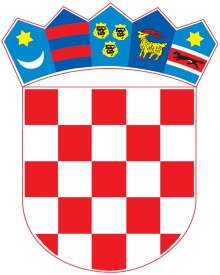22210 VERSION 1 PAGE 6 OF 6 GATHER AND
22400 RUMA VELJKA DUGOŠEVIĆA 9221 TELFAX 0222100540 MOBILNI22210 VERSION 1 PAGE 6 OF 6 GATHER AND
TRANSMISION POR FAX FECHA 362010 27210120222101202222503200917032503200909 TELEFAX NUMERO PAGINAS
Gather and analyse information for a landscape design proposal and prepare a client brief
22210 version 1
Page
Gather and analyse information for a landscape design proposal and prepare a client brief
|
Level |
4 |
|
Credits |
15 |
Purpose This unit standard is for people working, or intending to work, in landscape design. People credited with this unit standard are able to: document information on client and client needs for a specific landscape site; document cultural factors influencing landscape design solutions for a specified site; document historical factors influencing landscape design solutions for a specified site; assemble site survey information for a specified landscape site; analyse the potentials and limitations that may influence design solutions; and develop a client brief for the landscape design project.
|
Subfield |
Horticulture |
|
|
Domain |
Landscape |
|
|
Status |
Registered |
|
|
Status date |
25 September 2006 |
|
|
Date version published |
25 September 2006 |
|
|
Planned review date |
31 December 2011 |
|
|
Entry information |
Open. |
|
|
Replacement information |
This unit standard replaced unit standard 1028, unit standard 12479, unit standard 12480, and unit standard 12481. |
|
|
Accreditation |
Evaluation of documentation and visit by NZQA, industry and teaching professional in the same field from another provider. |
|
|
Standard setting body (SSB) |
Primary Industry Training Organisation |
|
|
Accreditation and Moderation Action Plan (AMAP) reference |
0032 |
|
This AMAP can be accessed at http://www.nzqa.govt.nz/framework/search/index.do.
Special notes
1 Workplace procedures refer to verbal or written instructions to staff on procedures for the worksite and equipment.
2 Legislation relevant to this unit standard includes but is not limited to the Health and Safety in Employment Act 1992.
3 Design enterprise standards and/or procedures may include but are not limited to quality assurance, documentation, security, communication, health and safety, ethics, interpersonal behaviour and design. An acceptable standard would be comparable to ISO9000 certified enterprises and/or organisations, and those standards set by an incorporated professional or trade body such as Landscape Industries Association of New Zealand or New Zealand Institute of Landscape Architects.
4 Clients may be potential clients if not actual clients.
5 Project Information Memorandum (PIM) can be defined as a report prepared by a Council at your request. It provides information on the following: special land features including potential erosion, avulsion (removal of land by water action), falling debris, subsidence, slippage, alluvion (the deposition of silt from flooding), inundation (flooding) and presence of hazardous contaminants which are likely to be relevant to the design construction or alteration of your proposed building and is known to the Council; information notified to the Council by any statutory organisation, such as the New Zealand Historic Places Trust or the Department of Conservation which has the power to classify land or buildings for any purpose; details of stormwater or wastewater utility systems which relate to your proposed building work, or which are adjacent to your building site; details of any authorisations under other Acts which the Council requires, and details of the requirements to be met in the granting of these authorisations and the conditions they will be subject to. The most common authorisations will be resource consents required under the Resource Management Act 1991. The memorandum will also include either: confirmation, subject to other provisions of the Act, that you may carry out the building work subject to the requirements of the Building Consent and subject also to all other necessary authorisations being obtained; or notification that building work may not be undertaken.
A Land Information Memorandum (LIM) can be defined as a report prepared by the Council at your request. It provides: official address, legal description, area of site and unit/flat number as appropriate; information on special land features or characteristics including potential avulsion (removal of land by water action), falling debris, subsidence, slippage, alluvion (the deposition of silt from flooding), inundation (flooding) and erosion.
Elements and performance criteria
Element 1
Document information on client and client needs for a specific landscape site.
Range at least three different clients/sites.
Performance criteria
1.1 Enquiries are dealt with promptly and thoroughly in accordance with workplace procedures.
Range services provided by workplace, services requiring referral to specialists (design, engineering, specialist trades).
1.2 Clients’ details and landscape requirements are obtained and documented in accordance with workplace procedures.
Range client lifestyle and perspectives, functional space requirements, privacy, safety and security, access, commitment to maintenance, timing of work, available budget/resources.
1.3 Information that may assist clients in making decisions relating to the proposed work is presented.
Range information on products, photographs of completed work, details of completed work that may be viewed.
Element 2
Document cultural factors influencing landscape design solutions for a specified site.
Performance criteria
2.1 On site cultural factors that may influence the design process are documented in accordance with design enterprise procedures.
Range factors may include but are not limited to – client values, limitations and/or requirements that family cultural perspectives place on design solutions, land issues.
2.2 Off site cultural factors that may influence the design process are documented in accordance with design enterprise procedures.
Range factors may include but are not limited to – socio-economic environment, cultural context in which the site is located, land issues.
Element 3
Document historical factors influencing landscape design solutions for a specified site.
Performance criteria
3.1 On site historical factors that may influence the design process are documented in accordance with design enterprise procedures.
Range factors may include but are not limited to – age and tradition of existing site elements, preservation and protection orders, building classifications, appropriateness of preservation and/or reinstatement.
3.2 Off site historical factors that may influence the design process are documented in accordance with design enterprise procedures.
Range factors may include but are not limited to – historic characteristics of the surrounding community, community preservation requirements and/or initiatives, national/territorial authority preservation requirements and/or initiatives.
Element 4
Assemble site survey information for a specified landscape site.
Range on site and off site factors.
Performance criteria
4.1 Recorded results of a physical survey of the site define geographic details in accordance with industry standards.
Range orientation, measurements, levels, existing features, structures and services, access and circulation patterns.
4.2 Recorded results of an investigation of the site identify environmental elements that may influence the design process in accordance with design enterprise procedures.
Range wind, sun, temperature ranges, soil type and condition; on and off site influences to include structures, trees and water, activities.
4.3 Recorded results of a site documentation search identify legal status and service details required for design development and statutory application requirements in accordance with design enterprise standards.
Range results may include but are not limited to – PIM's, LIM's, planning approval, resource consents, building consents, services, easements.
Element 5
Analyse the potentials and limitations that may influence design solutions.
Performance criteria
5.1 Client driven factors that may influence design solutions are analysed.
Range factors may include but are not limited to – finance available, attitudes and perceptions, the present situation, scope and extent of client requirements, client affiliation with current trends.
5.2 Site driven factors to be considered by the designer in meeting client needs are analysed.
Range factors may include but are not limited to – topographical, ecological, environmental, cultural.
5.3 External factors that may influence design solutions are analysed.
Range national standards, statutory requirements, regulatory requirements.
5.4 Design enterprise factors that may influence designer’s ability to complete the work are determined.
Range factors may include but are not limited to – previous relevant experience, ability to fit the work into the design enterprise programme, assessment of the design enterprise’s ability to meet client requirements.
5.5 Design enterprise standards are met in order to maximise the potential and minimise limitations in the design process.
5.6 Resolution is documented in a manner that provides the basis for conceptual design work in accordance with design enterprise standards.
Element 6
Develop a client brief for the landscape design project.
Performance criteria
6.1 Procedures used to interpret assembled information ensure all components of the brief are completed in accordance with design enterprise requirements.
Range factors may include but are not limited to – material and/or technical, financial, environmental, time, access.
6.2 Methods used to develop client brief conform to design enterprise procedures.
6.3 Completed brief outlines client input and the potentials and limitations of the design process and is in accordance with design enterprise standards.
Please note
Providers must be accredited by the Qualifications Authority, or an inter-institutional body with delegated authority for quality assurance, before they can report credits from assessment against unit standards or deliver courses of study leading to that assessment.
Industry Training Organisations must be accredited by the Qualifications Authority before they can register credits from assessment against unit standards.
Accredited providers and Industry Training Organisations assessing against unit standards must engage with the moderation system that applies to those standards.
Accreditation requirements and an outline of the moderation system that applies to this standard are outlined in the Accreditation and Moderation Action Plan (AMAP). The AMAP also includes useful information about special requirements for organisations wishing to develop education and training programmes, such as minimum qualifications for tutors and assessors, and special resource requirements.
Comments on this unit standard
Please contact the Primary Industry Training Organisation www.primaryito.ac.nz if you wish to suggest changes to the content of this unit standard.
Ó
New Zealand Qualifications Authority
Tags: 22210 version, 22210, version, gather
- SCENARIUSZ DO PRACY ZDALNEJ POZIOM B 5LATKI KWIECIEŃ TYDZIEŃ
- LOS MEDIOS COMUNITARIOS ANTE LAS NUEVAS POLÍTICAS DE COMUNICACIÓN
- FORM 3 TC AKSARAY ÜNİVERSİTESİ KISMİ ZAMANLI (PART TIME)
- UNIT 2 SCIENCE FOR ENGINEERING LO3 UNDERSTAND FUNDAMENTAL
- 2013 M BIRŽELIO 7 D 16 VAL TAUTINIŲ BENDRIJŲ
- INNERCITY BUSINESS SUPPORT PROGRAM IF YOU ARE A BUSINESS
- NAVODILO ZA IZPOLNITEV VLOGE IN DOLOČITEV TEHNIČNIH KRITERIJEV 1
- ENDUSER LICENSE AGREEMENT FOR MICROSOFT SOFTWARE MICROSOFT WINDOWS INSTALLER
- NAVODILA ZA ODDAJO VLOG VLAGATELJI IZPOLNIJO IN ODDAJO VLOGE
- WSKAZANIA KONFERENCJI EPISKOPATU POLSKI DOTYCZĄCE PRZYGOTOWANIA DO PRZYJĘCIA SAKRAMENTU
- CERDOS PIÑAS Y OTROS MORTALES CADA DÍA MUEREN 150000
- „VOM KOCHREZEPT ZUM FORSCHENDEN LERNEN“ DR SIMONE ABELS MAG
- WHERE THE MARGIN IS 3ND INTERNATIONAL CONFERENCE FOR AGRICULTURAL
- Study Questions – tms Part vi (moral Foundations of
- 76 BIBLIOGRAPHIE ZU RUDOLF BULTMANN ERSTELLT VON OSKAR HACKENBERG
- LOS ÁCIDOS NUCLÉICOS SON GRANDES MOLÉCULAS FORMADAS POR LA
- ZASEDÁNÍ AS PŘF UP 10 DUBNA 2019 1300 PEVNOST
- COMMONWEALTH OF VIRGINIA BOARD OF PHYSICAL THERAPY 9960 MAYLAND
- A DAY OUT HE FASTENED THE ROPE TO
- KISMİ ZAMANLI ÖĞRENCİ ÇALIŞTIRMA AKDİ 1 TARAFLAR İŞVEREN ADI
- OBRAZEC ZA PRIPRAVO IZVLEČKA IZ POROČILA O REZULTATIH ANKETIRANJA
- PODPORA ZAMĚSTNÁVÁNÍ OSOB SE ZDRAVOTNÍM POSTIŽENÍM – INFORMACE PRO
- INSTITUTO NACIONAL DE EDUCACIÓN BÁSICA Y BACHILLERATO POR MADUREZ
- MOD 271UD AL DIRIGENTE SCOLASTICO RICHIESTA ASSEMBLEA DI CLASSE
- THOMAS W MEAGHER SENIOR PARTNER AND PRACTICE LEADER RETIREMENT
- MODEL CDDT DOCUMENT DE COMPROMÍS DOCTORAL DOCUMENT DE COMPROMÍS
- 9 GALETA IVAN LADISLAV MULTIMEDIJSKI UMJETNIK VINKOVCI 9 V
- USER’S MANUALSUPREME AUDIO DIGITAL 900MHZ SA94 HEADWORN TRANSMITTER MODEL
- C ONVOCATORIA 2013 RECOGIDA DE BUENAS PRÁCTICAS EN ENFERMEDADES
- E STATUTS CAPÍTOL I BASES DE LA SOCIETAT ARTICLE
 TISKOVÁ ZPRÁVA UVEDENÍ POŠTOVNÍ ZNÁMKY K 200 VÝROČÍ ZALOŽENÍ
TISKOVÁ ZPRÁVA UVEDENÍ POŠTOVNÍ ZNÁMKY K 200 VÝROČÍ ZALOŽENÍ 69(I) OF 1992 20(I) OF 2012 98(I) OF 2013
69(I) OF 1992 20(I) OF 2012 98(I) OF 2013 SUN ENTERPRISES PAID INTERNSHIP (AMSTERDAM) SALES AND LOGISTICS TEAM
SUN ENTERPRISES PAID INTERNSHIP (AMSTERDAM) SALES AND LOGISTICS TEAMFAC SIMILE 3) MARCA DA BOLLO VALORE VIGENTE PROCEDURA
LAMPIRAN PENGUMUMAN NOMOR TANGGAL LAMPIRAN A FORMAT
BLUFFTON EXEMPTED VILLAGE SCHOOLS 20192020 SUMMER DISTRICT NEWSLETTER ~
ŚLĄSKI UNIWERSYTET MEDYCZNY W KATOWICACH PROCEDURA W SPRAWIE ZASAD
 CHECKLIST FOR THE APPLICATION OF SUSTAINABILITY CRITERIA IN PUBLIC
CHECKLIST FOR THE APPLICATION OF SUSTAINABILITY CRITERIA IN PUBLIC KARTA UZYSKANYCH WYNIKÓW DO WSPÓŁZAWODNICTWA LOTOWEGO O MISTRZOSTWO
KARTA UZYSKANYCH WYNIKÓW DO WSPÓŁZAWODNICTWA LOTOWEGO O MISTRZOSTWO REGISTRET ÖVER LEVERANTÖRER AV SKOGSODLINGSMATERIAL 5 (5) LÄS IFYLLNINGSANVISNINGARNA
REGISTRET ÖVER LEVERANTÖRER AV SKOGSODLINGSMATERIAL 5 (5) LÄS IFYLLNINGSANVISNINGARNAFISICA III PRACTICA 27102010 PROBLEMA 1 UN LÁSER NORMAL
SAMPLE ILLUSTRATION COMMUNICATION OF INTERNAL CONTROL RELATED MATTERS
1)BYTOVÝ PODNIK V PRAZE 7 STÁTNÍ PODNIK V LIKVIDACI
 N A C R T REPUBLIKA HRVATSKA KRAPINSKO –
N A C R T REPUBLIKA HRVATSKA KRAPINSKO –FAQ NJC GREATER LONDON EMPLOYERS PAY OFFER MEMBERS’
CEZA TAAHHÜTNAMESI 1)ÜRÜNLE ILGILI MALIYET FARKI OLUŞTURMAYAN ÜRÜNE AIT
 NEWS STATEMENT BY THE NATIONAL AGRICULTURAL MARKETING COUNCIL
NEWS STATEMENT BY THE NATIONAL AGRICULTURAL MARKETING COUNCIL  HALEY JONES – MATH LESSON PLANS –AUGUST 28
HALEY JONES – MATH LESSON PLANS –AUGUST 28 COLLECTION OF REASONS FOR ABSENCE FROM KEY STAGE 3
 BRUXELLES LE 6 AVRIL 2001 CIRCULAIRE N°40 OBJET
BRUXELLES LE 6 AVRIL 2001 CIRCULAIRE N°40 OBJET